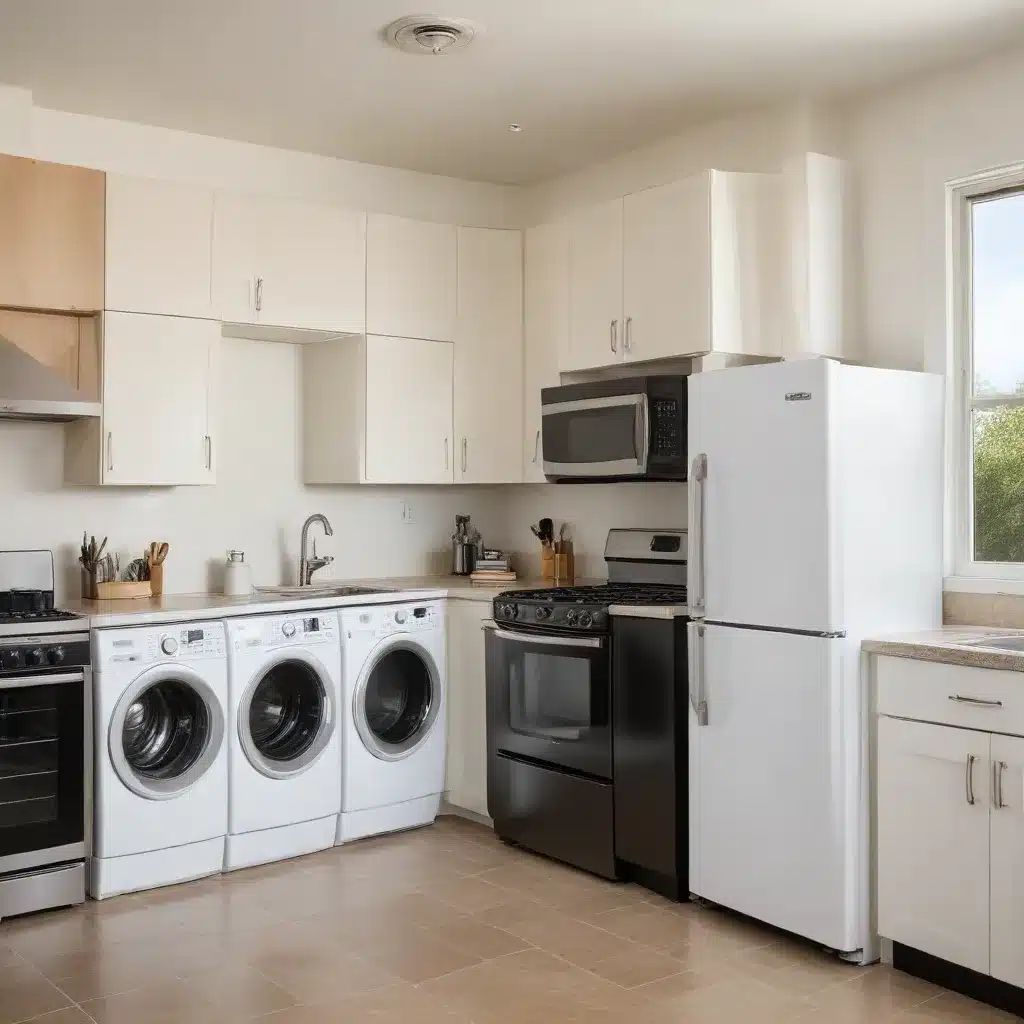
Understanding Local Regulations and Best Practices
In the bustling city of Santa Barbara, homeowners and property managers face the ongoing challenge of maintaining their homes and appliances. With a focus on sustainability and cost-effectiveness, it’s essential to navigate the local regulations and best practices when deciding whether to repair or replace home appliances.
The City of Santa Barbara has implemented several initiatives to promote energy efficiency and reduce waste, which directly impact the home repair and maintenance industry. The Santa Barbara Superior Repair website highlights the importance of regularly servicing and repairing appliances to extend their lifespan, rather than automatically opting for replacement.
According to the City’s guidelines, homeowners are encouraged to explore repair options before considering replacement, as repairing an appliance can often be more cost-effective and environmentally friendly. The local regulations emphasize the significance of working with certified technicians, utilizing energy-efficient replacement parts, and properly disposing of old appliances to minimize the environmental impact.
Repair or Replace? Evaluating the Cost Factors
When it comes to home appliances, the decision to repair or replace can have significant financial implications. The City of Santa Barbara provides homeowners with a general guideline to help assess the cost-effectiveness of repair versus replacement:
-
Repair Cost: The cost of repairing an appliance, including labor and replacement parts, should generally be less than 50% of the cost of a new, energy-efficient model.
-
Remaining Lifespan: If the appliance is more than halfway through its expected lifespan, it may be more cost-effective to replace it with a newer, more efficient model.
-
Energy Savings: Replacing an older, inefficient appliance with a new, Energy Star-certified model can result in significant long-term energy savings, potentially offsetting the initial replacement cost.
To illustrate these factors, consider the following example:
A homeowner in Santa Barbara needs to repair their refrigerator, which is 7 years old. The estimated repair cost, including labor and parts, is $350. The cost of a new, Energy Star-certified refrigerator is $1,200.
In this case, the repair cost is less than 50% of the replacement cost ($350 < $600), and the refrigerator is not yet at the end of its expected lifespan. Additionally, the energy savings from a new, efficient model could provide long-term cost savings. Therefore, repairing the existing refrigerator may be the more economical choice.
Eco-Friendly Repair Practices
The City of Santa Barbara encourages homeowners and property managers to prioritize environmentally responsible repair practices when servicing their home appliances. Some key considerations include:
-
Utilizing Reconditioned or Refurbished Parts: Many local repair services in Santa Barbara offer the option to use reconditioned or refurbished parts, which can significantly reduce the environmental impact and cost compared to purchasing entirely new components.
-
Proper Disposal of Old Appliances: When an appliance is beyond repair or replacement is necessary, it’s crucial to dispose of the old unit properly. The City of Santa Barbara provides guidelines for the safe and eco-friendly disposal of appliances, including the recycling of materials such as metal, plastic, and refrigerants.
-
Energy-Efficient Replacements: If replacement is the best option, homeowners should prioritize Energy Star-certified models, which are designed to be more energy-efficient and reduce their environmental footprint. The City’s website offers resources to help identify the most energy-efficient appliance options for Santa Barbara residents.
-
Preventive Maintenance: Regular maintenance and service of home appliances can extend their lifespan and improve energy efficiency, ultimately reducing the need for premature replacement. The City encourages homeowners to develop a proactive maintenance routine and work with certified technicians to keep their appliances running at optimal performance.
By embracing these eco-friendly repair practices, Santa Barbara residents can not only save money but also contribute to the city’s sustainability goals and reduce their environmental impact.
Navigating the Compliance Landscape
In Santa Barbara, homeowners and property managers must navigate a comprehensive compliance landscape when it comes to home appliance repair and maintenance. The City has implemented several regulations and guidelines to ensure the safety, efficiency, and environmental responsibility of these services.
-
Licensing and Certification: All repair technicians working in Santa Barbara must be licensed and certified by the appropriate governing bodies. This ensures that they have the necessary skills, knowledge, and training to provide high-quality, compliant services.
-
Permits and Inspections: Certain home appliance repair or replacement projects may require permits and inspections from the City’s Building and Safety Division. Homeowners and property managers should consult the local guidelines to determine if a permit is needed before undertaking any major work.
-
Energy Efficiency Standards: The City of Santa Barbara has adopted various energy efficiency standards, including the California Energy Code and the federal Energy Star program. When replacing appliances, homeowners must select models that meet or exceed these standards to comply with local regulations.
-
Waste Disposal and Recycling: As mentioned earlier, the proper disposal and recycling of old appliances are crucial. Homeowners and property managers must adhere to the City’s guidelines for the safe handling and environmentally responsible disposal of appliance components, such as refrigerants and hazardous materials.
By staying informed and compliant with these local regulations, Santa Barbara residents can ensure that their home appliance repair and maintenance practices align with the City’s sustainability objectives, while also protecting their investment and the safety of their property.
Conclusion
In the vibrant city of Santa Barbara, the decision to repair or replace home appliances is a complex one that requires careful consideration of local regulations, cost factors, and eco-friendly practices. By understanding the guidance provided by the City, homeowners and property managers can make informed choices that not only extend the lifespan of their appliances but also contribute to the community’s broader sustainability goals.
Whether it’s working with certified technicians, utilizing reconditioned parts, or selecting energy-efficient replacement models, Santa Barbara residents have a wealth of resources and support to help them navigate the repair versus replacement dilemma. By embracing these best practices, they can safeguard their property, manage their expenses, and play a vital role in preserving the environmental well-being of their local community.

